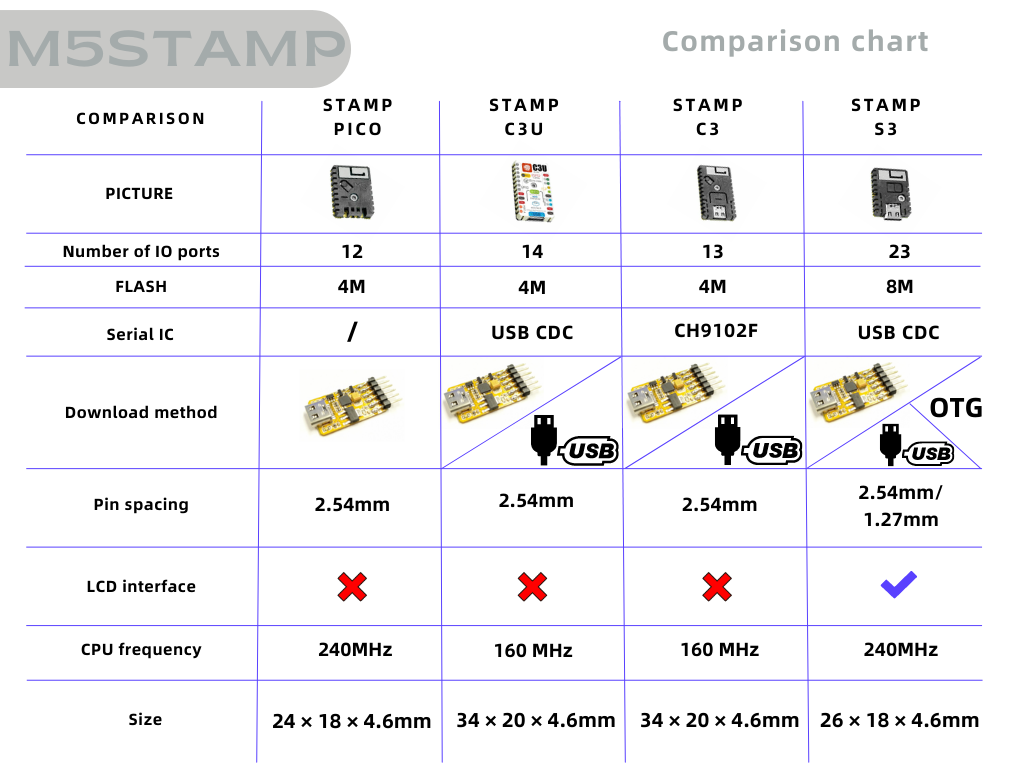Stamp-Pico
SKU:C050-B
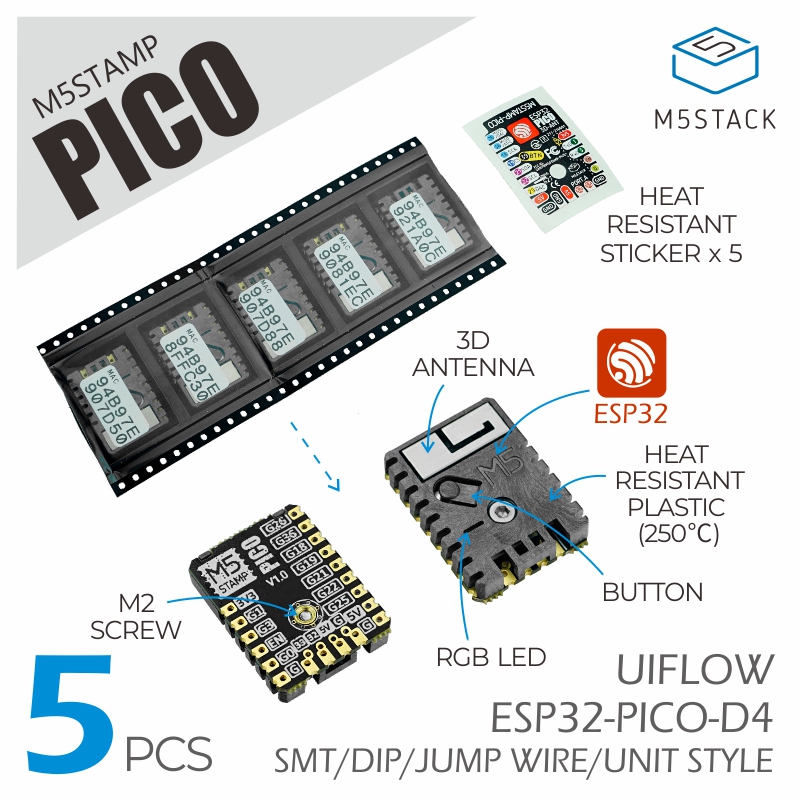
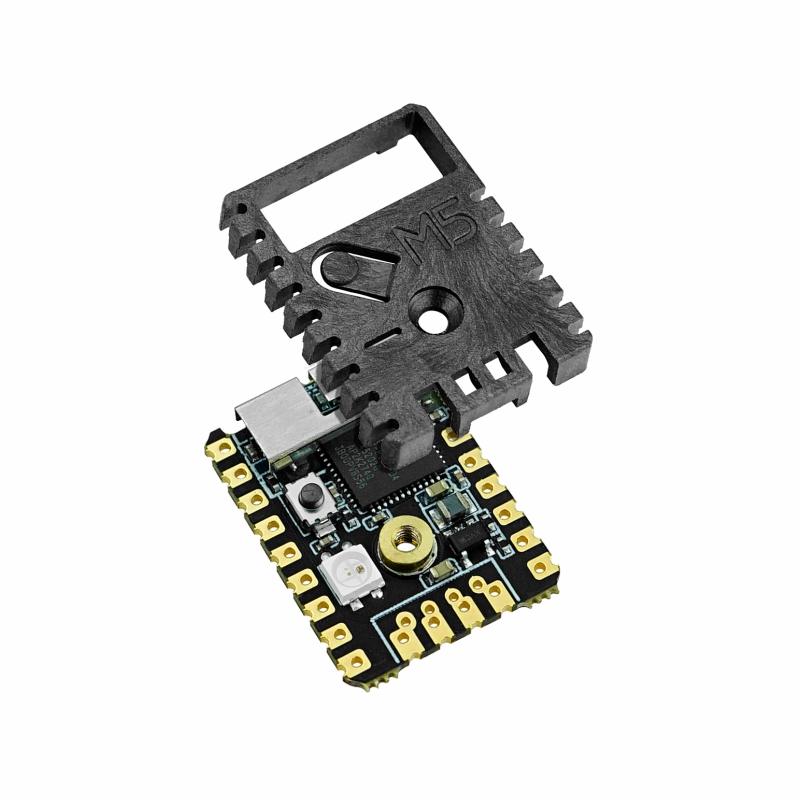
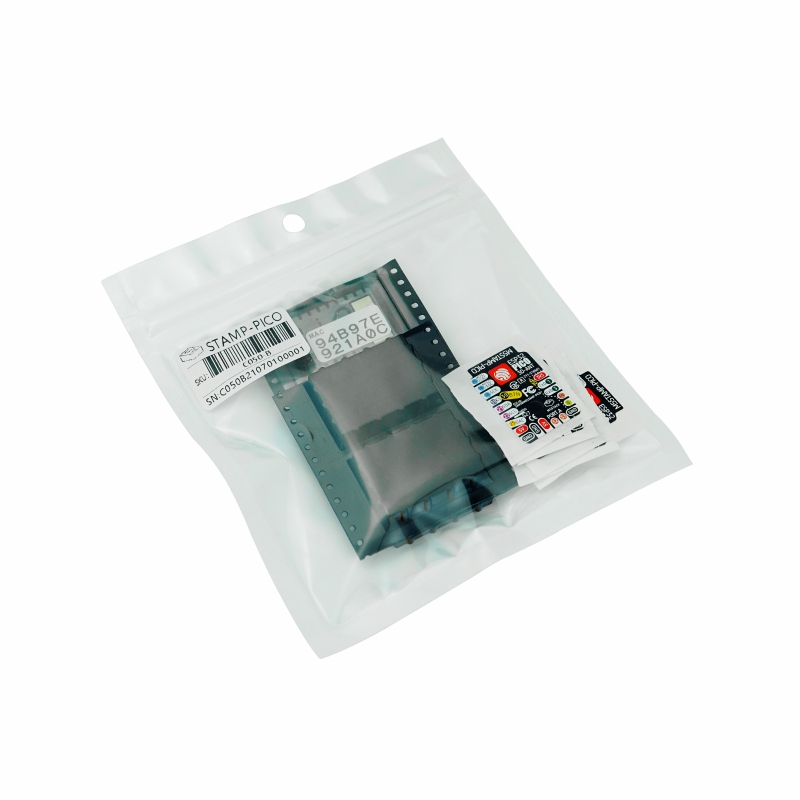
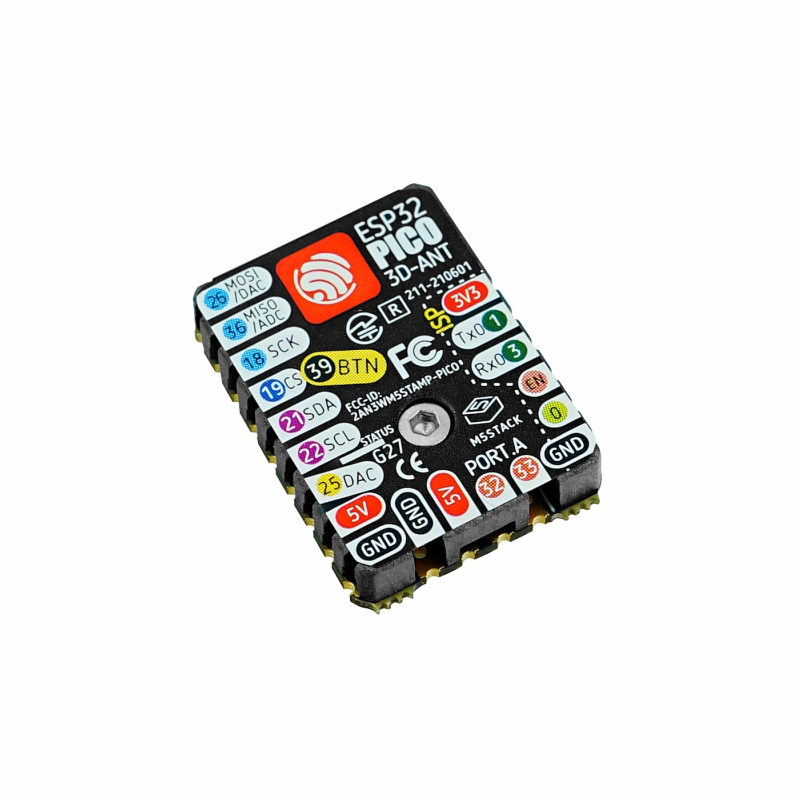
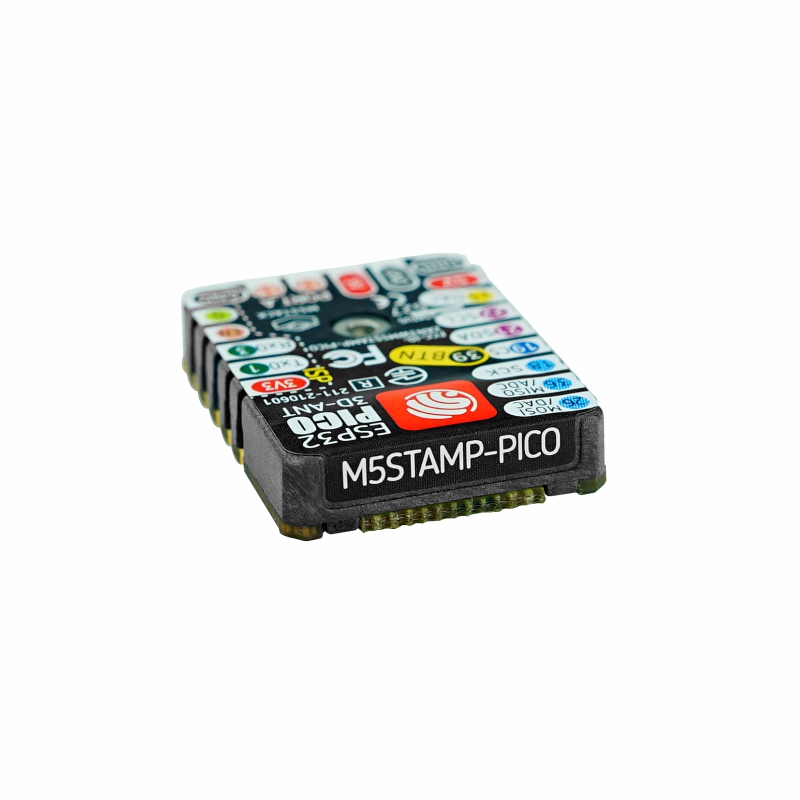
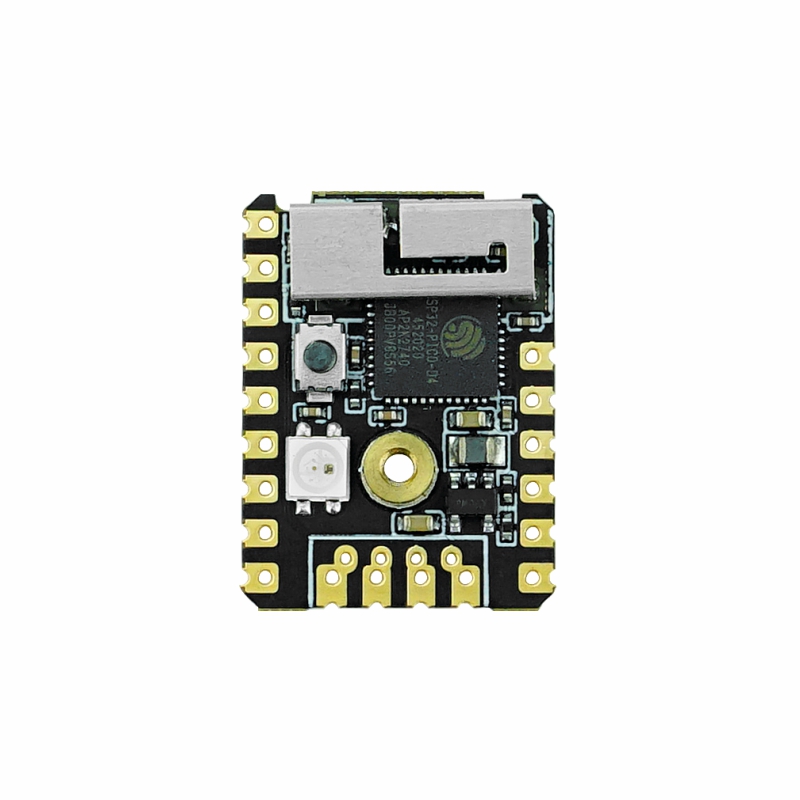
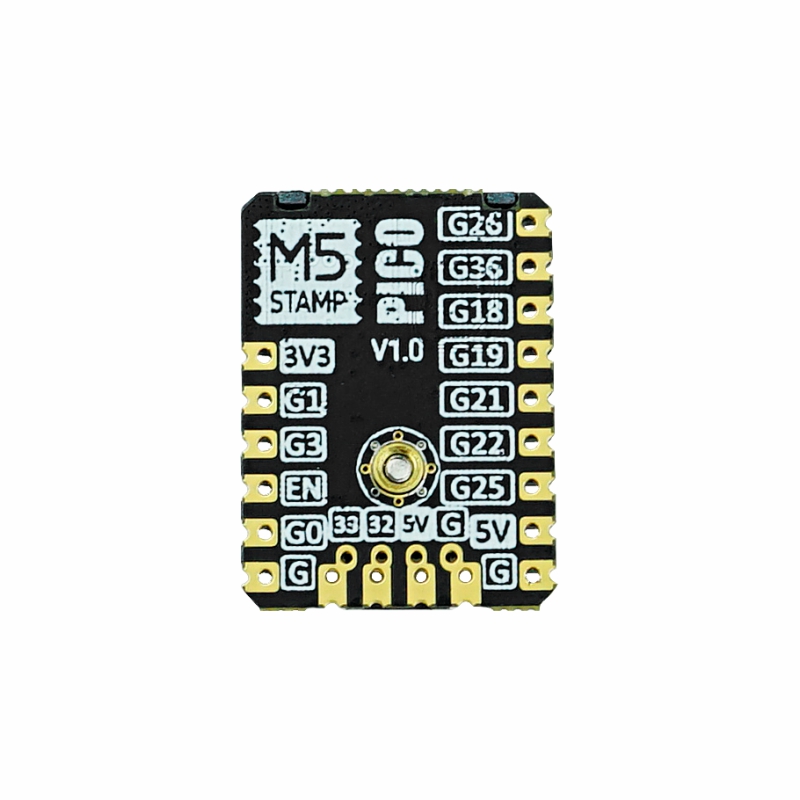
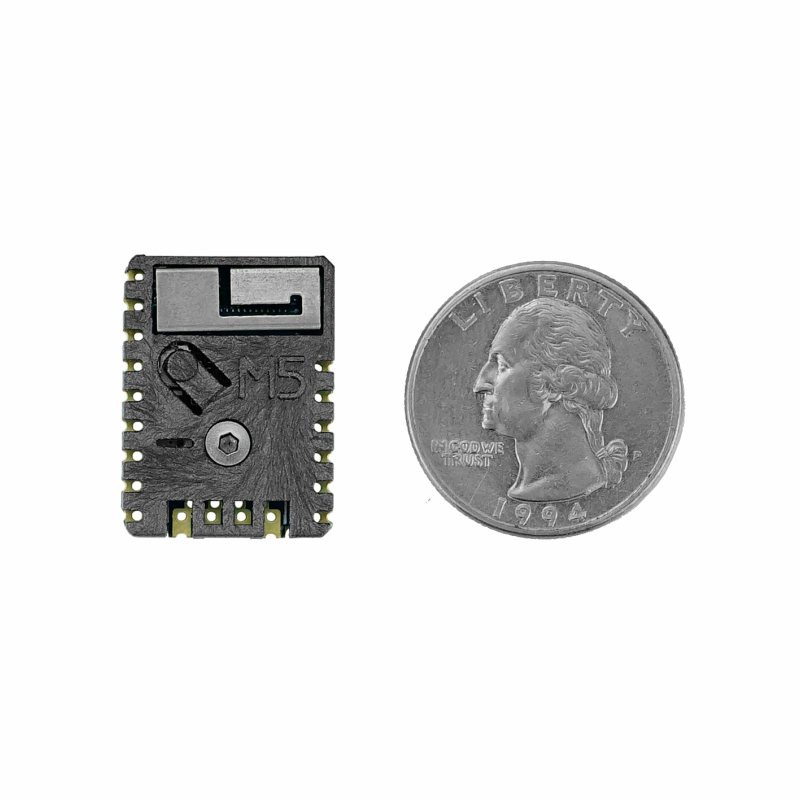
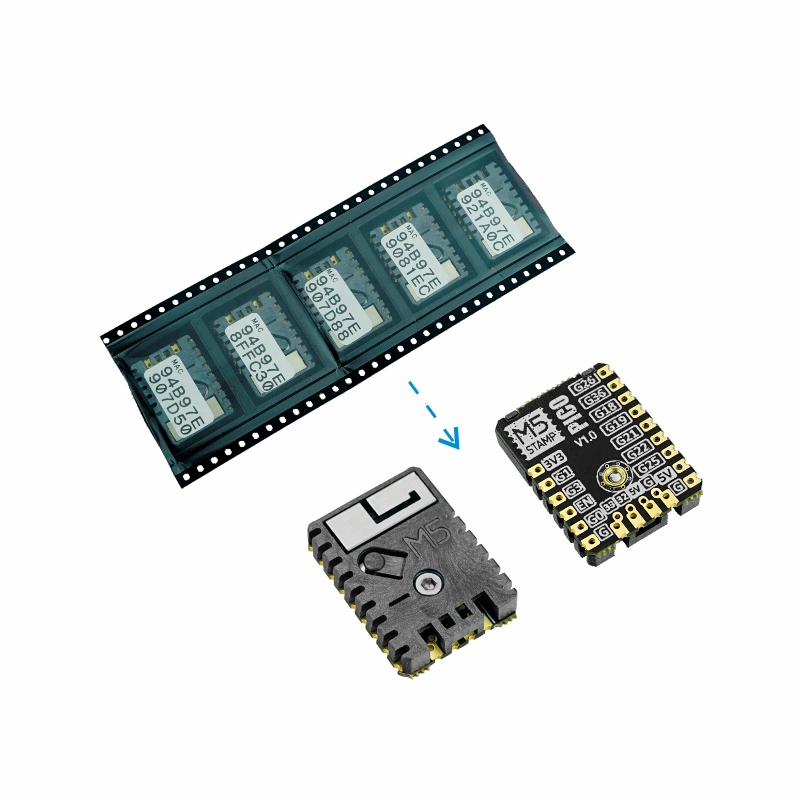









Description
Stamp-Pico is a plug-and-play, high-cost-performance Wi-Fi minimum core board. It adopts the ESP32 main control chip from Espressif Systems and is equipped with 2 low-power Xtensa® 32-bit LX6 microprocessors, with a main frequency of up to 240 MHz. It features a compact size, strong performance, and low power consumption, making it suitable for any IoT application scenarios where space is limited or battery power supply is used.
Tutorial
This tutorial will introduce to you how to control the Stamp-Pico through the UIFlow graphical programming platform.
This tutorial will introduce to you how to control the Stamp-Pico through programming with the Arduino IDE.
Features
- ESP32-PICO-D4 (2.4GHz Wi-Fi)
- Multiple IOs are led out, supporting various application forms (SMT (Surface Mount Technology), DIP (Dual In-line Package), and jumper wires).
- Integrated with a programmable RGB LED and a button.
- It is the minimum system board of ESP32.
- Equipped with high-temperature plastic armor to better protect the 3D antenna and components.
- Includes a 5V->3.3V DC/DC circuit, 12 GPIO (General Purpose Input/Output) pins, one programmable RGB light, and one button.
- The professionally tuned RF (Radio Frequency) circuit provides stable and reliable wireless communication quality.
- Development Platform
- UiFlow1
- UiFlow2
- Arduino IDE
- ESP-IDF
- Platform.IO
Includes
- 5 x Stamp-Pico
- 5 x Heat Resistant Sticker
Applications
- DIY prototype production
- Industrial automation
- Smart home
Specifications
| Specification | Parameter |
|---|---|
| ESP32-PICO-D4 | Dual-core with a frequency of 240MHz, 600 DMIPS, 520KB SRAM, Wi-Fi package: LGA48 (7*7mm) |
| Flash | 4MB |
| Input Voltage | 5V @ 500mA |
| Power Consumption | Normal standby: 5V@29mA, In WIFI STA mode: 5V@60mA, In data transmission state under classic Bluetooth mode: 5V@84mA, In DeepSleep mode: 5V@0.35mA |
| Wireless Communication Distance | In AP mode: 16m, In BLE mode: 110m, In classic Bluetooth mode: 90m |
| Human-Machine Interaction | 1 programmable physical button, 1 programmable RGB LED (SK6812) |
| Antenna Type | 2.4G 3D antenna |
| Wi-Fi | 802.11 b/g/n (The speed of 802.11n can reach up to 150 Mbps), Frequency spectrum range: 2.4 GHz ~ 2.5 GHz |
| Peripheral Interface Resources of the Module | ADC, DAC, touch sensor, SD/SDIO/MMC host controller, SPI, SDIO/SPI slave controller, EMAC, motor PWM, LED PWM, UART, I2C, I2S, infrared remote controller, GPIO, pulse counter |
| IO Interfaces (x12) | G0, G1, G3, G26, G36, G18, G19, G21, G22, G25, G32, G33 |
| Spacing of IO Interfaces | 2.54mm |
| Operating Temperature | 0 ~ 60°C |
| Specification of Fixing Screws | M2 x 4 Countersunk Hex Socket Head Cap Screw with Machine Thread |
| Product Size | 24.0 x 18.0 x 4.6mm |
| Product Weight | 13.7g |
| Packaging Size | 138.0 x 93.0 x 5.6mm |
| Gross Weight | 16.3g |
Learn
Downloading the Program
- The Stamp-Pico adopts the most streamlined circuit design, so it does not include a program download circuit. When using it, users can download the program through a USB-TTL programmer. The wiring method is shown in the figure below.
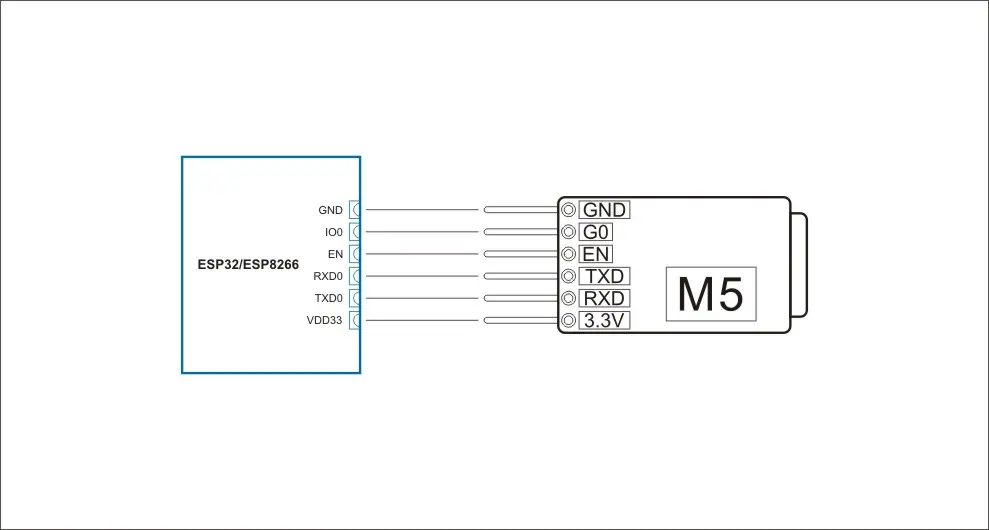
The shell supports the reflow soldering temperature curve.
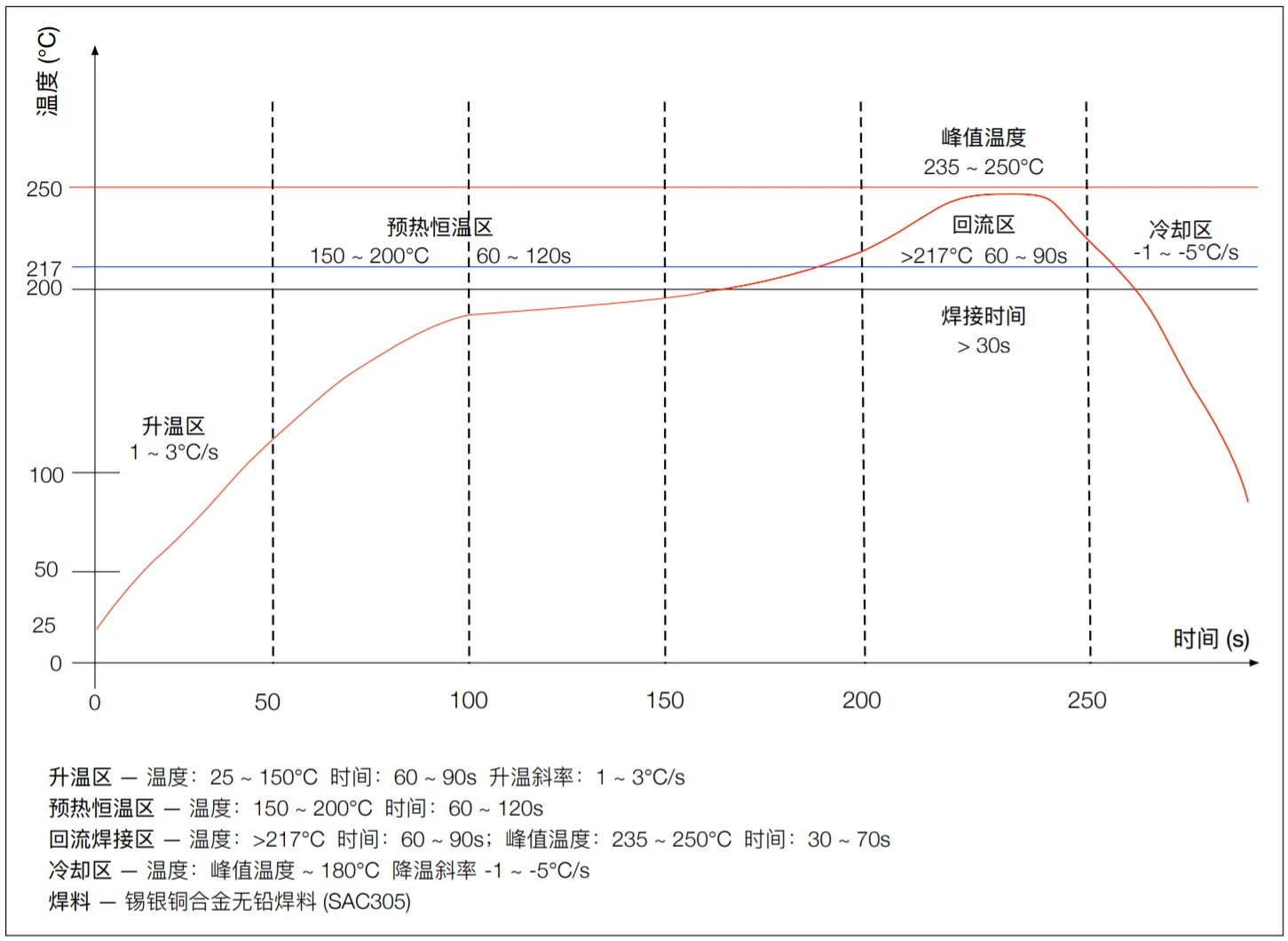
Schematics
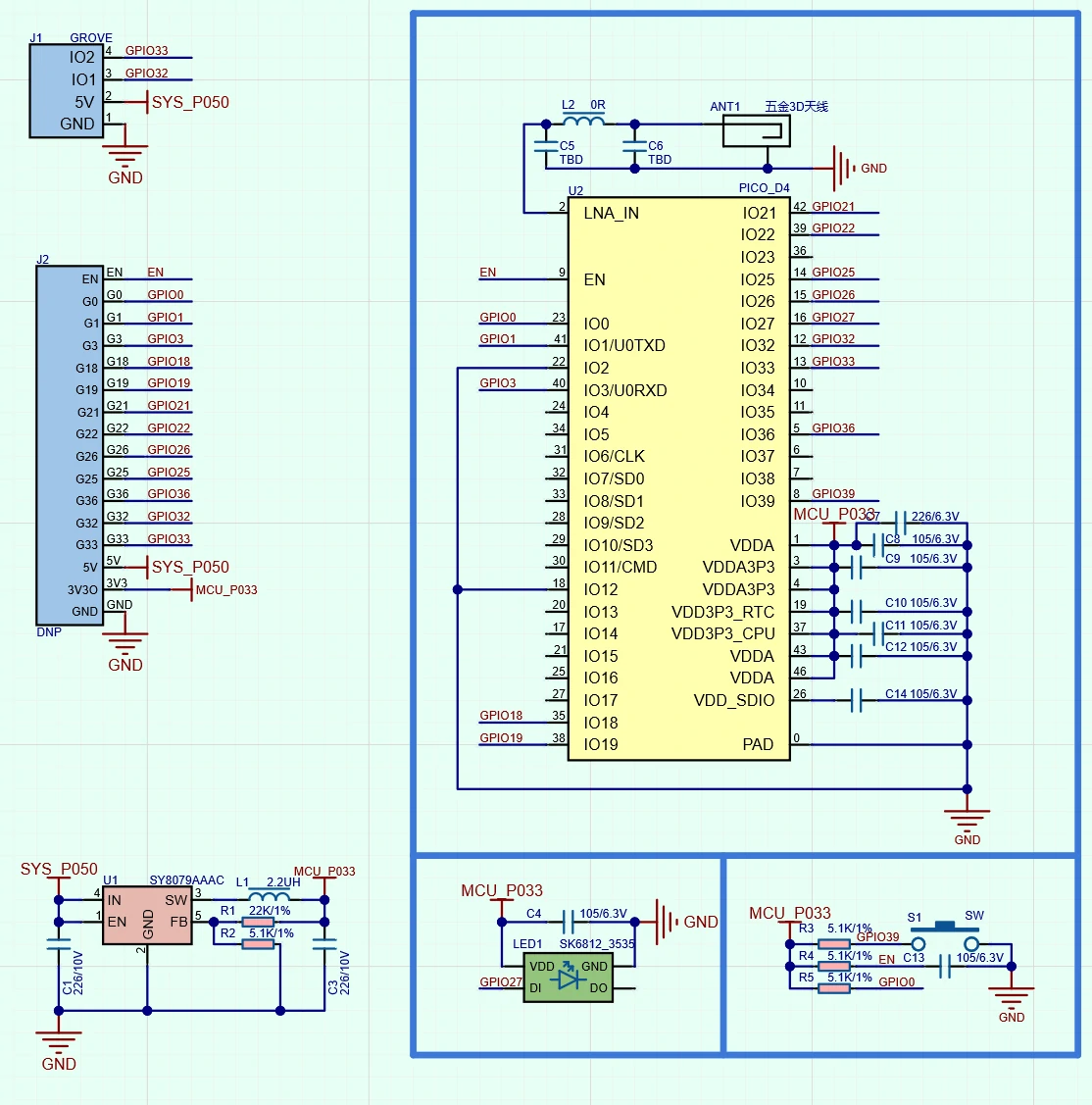
PinMap
SK6812,Button
| ESP32 | G27 | G39 |
|---|---|---|
| SK6812 | DI | / |
| Button | / | SW |
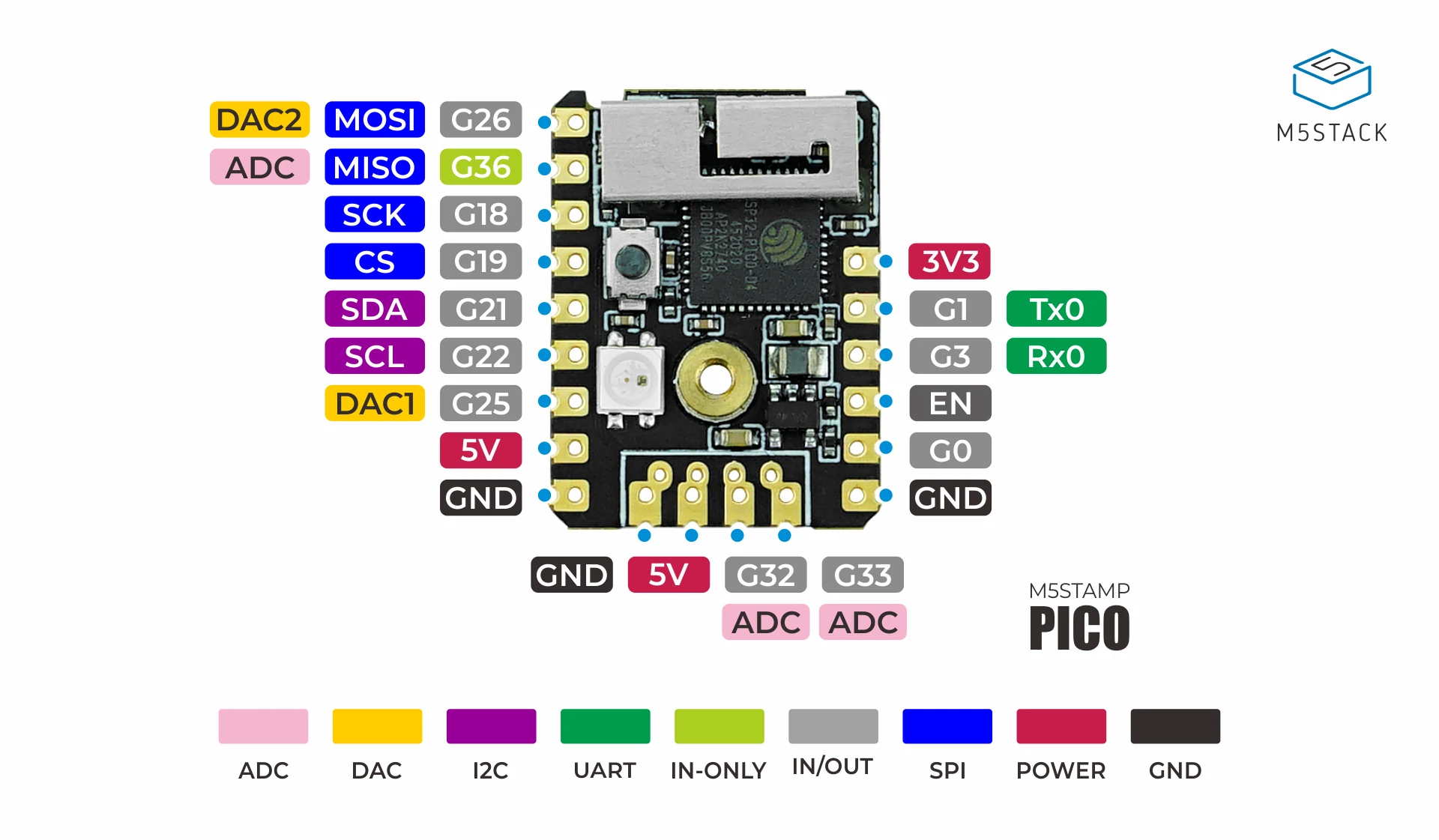
Model Size
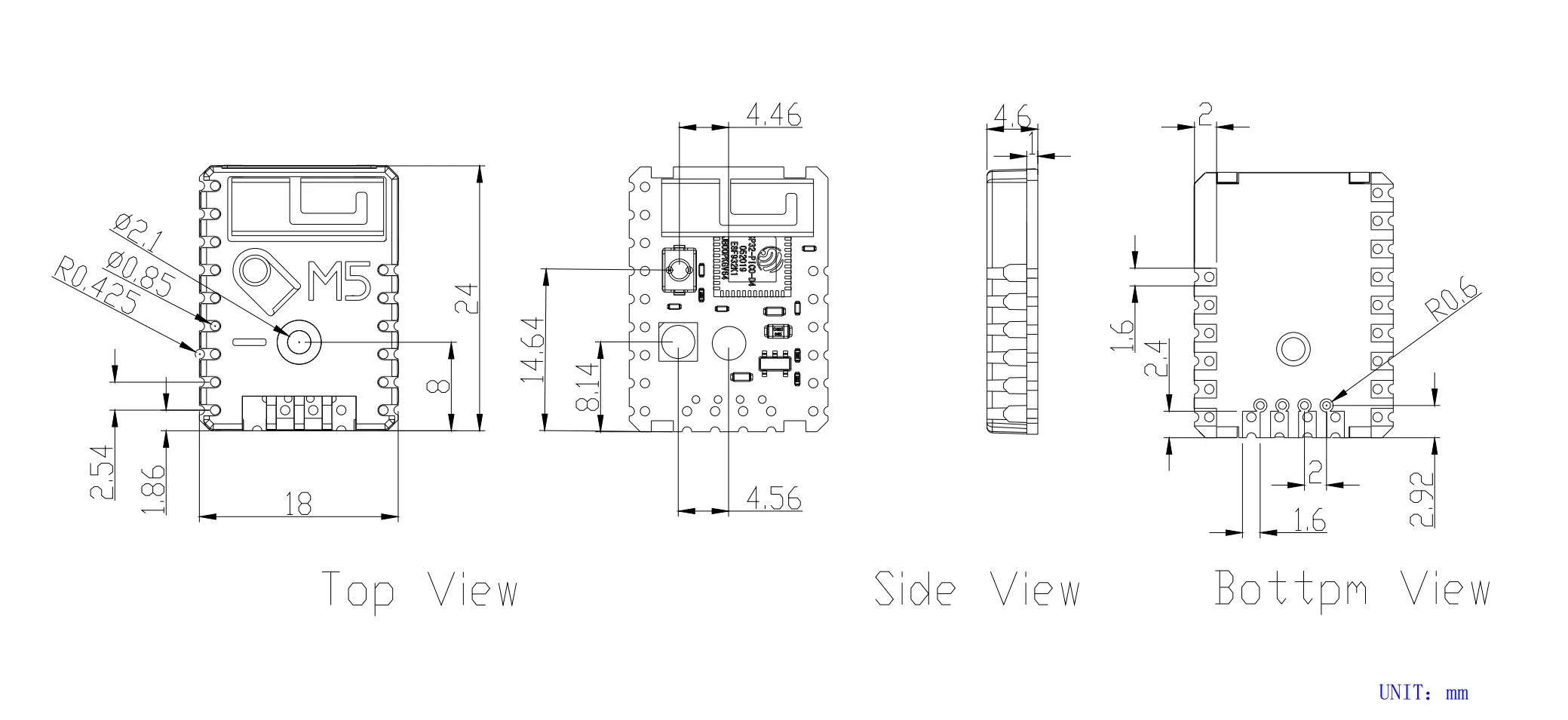

PCB
Datasheets
Softwares
Arduino
USB Driver
Before performing the burning process, you need to connect a USB-TTL programming board to the Stamp-Pico and make the connections according to the silkscreen on the board. Install the corresponding driver for the programming board on the PC.
The most convenient way is to
purchase the Stamp-Pico kit version with a programmer
. The wire sequence of the included programmer is consistent with that of the STAMP-PICO, so you can directly plug it in for burning without wiring. Currently, M5 offers programmers with two types of driver chips, and there are compressed packages of driver programs for CP210X (suitable for the CP2104 version)/CH9102 (suitable for the CH9102 version). After decompressing the compressed package, select the installation package corresponding to the bit number of your operating system for installation. (If you are not sure which USB chip your device uses, you can install both drivers simultaneously.)
| Driver Name | Compatible Driver Chip | Download Link |
|---|---|---|
| CP210x_VCP_Windows | CP2104 | Download |
| CP210x_VCP_MacOS | CP2104 | Download |
| CP210x_VCP_Linux | CP2104 | Download |
| CH9102_VCP_SER_Windows | CH9102 | Download |
| CH9102_VCP_SER_MacOS v1.7 | CH9102 | Download |
Port selection on MacOS
On MacOS, there may be two available ports. When using, please select the port named wchmodem.
Video
Product Comparison
